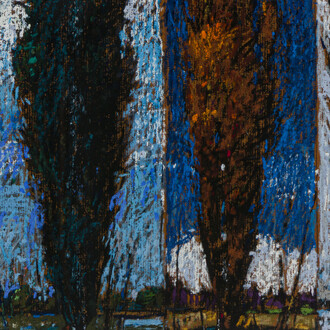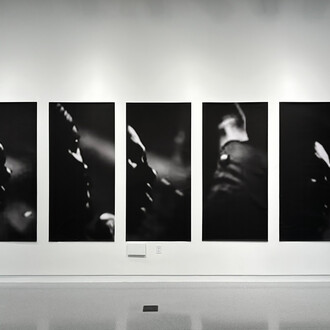Paintings by Frida Kahlo (1907–1954) and Diego Rivera (1886–1957), two of the most celebrated artists of the early 20th century, will be on view in a group exhibition of 75 works at NSU Art Museum Fort Lauderdale from February 26 through May 31, 2015: Frida Kahlo and Diego Rivera from the Jacques and Natasha Gelman Collection & 20th Century Mexican Art from the Stanley and Pearl Goodman Collection.
Showcasing the rich artistic traditions of Mexico and the passionate and patriotic pride of its artists, the exhibition features masterworks by Kahlo and Rivera along with paintings, sculptures and works on paper by other influential Mexican artists involved in the country’s political and social struggles, including Leonora Carrington (1917-2011), Gunther Gerzso (1915-2000), José Clemente Orózco (1883-1949), Wolfgang Paalen (1905-1959), Alfredo Ramos Martinez (1917- 1946), David Siqueiros (1896-1974), Rufino Tamayo (1889-1991), and Remedios Varo (1908- 1963). Together, their work helped to define Mexican modernism, demonstrating the broad range of artistic expression and varying political forces that shaped the country’s cultural heritage.
Accompanying these works are photographs of Frida and Diego by American and Mexican photographers such as Leo Matiz (1917-1978), Martin Munkácsi (1896-1963), and Nickolas Muray (1892-1965), who documented the vastly different personalities of Kahlo and Rivera in portraits included in the exhibition. The artists’ mutual passions and shared political and artistic convictions bound them closely.
Presented by AutoNation, the exhibition is organized by NSU Art Museum Fort Lauderdale in association with the Vergel Foundation. It brings together works from both the world-renowned Jacques and Natasha Gelman Collection and major works by Mexican modern artists collected by Stanley and Pearl Goodman of Fort Lauderdale, who pledged their collection of more than 75 works by modern Latin American artists to the NSU Art Museum Fort Lauderdale. The exhibition also inaugurates NSU Art Museum Fort Lauderdale’s Stanley and Pearl Goodman Center for the Study of Latin American Art, the only resource of its kind for scholars in the region. A portion of the library and archived documents will be on view in a section of the exhibition.
The Jacques and Natasha Gelman Collection is known for its significant holdings of work by Kahlo. The collection was established in 1941 by Jacques Gelman (1909-1986), a successful filmmaker, and his wife, Natasha (1912-1998), two Eastern European immigrants who met and married in Mexico City, before becoming Mexican citizens in 1942. The couple were passionate about the art and culture of their new homeland, becoming devoted art patrons and establishing close friendships with Kahlo, Rivera, and many of their contemporaries.
Outstanding paintings from the collection include many of Kahlo’s best-known self-portraits including Diego on my Mind (Self-Portrait as A Tehuana), 1943, where Kahlo gazes at the viewer, enshrined in the elaborate headdress traditional to Mexico’s southwest region with a portrait of Rivera inscribed on her forehead; Love Embrace of the Universe, Earth (Mexico), Myself, Diego and Señor Xolotl, 1940, presenting a mythical portrait of Kahlo cradling Rivera’s naked body in her arms; and Self-Portrait with Monkeys, 1943, a well-known image the artist surrounded by monkeys.
The Gelman Collection also includes major works from Rivera including his provocative Portrait of Natasha Gelman, 1943. In this work, the seductive art collector stares out of the canvas from a chaise of grey-green cushions, surrounded by an abundance of white calla lilies. He presents the lily again in his sensual Calla Lily Vendor, 1943, in which floral forms contrast with three faceless figures who kneel immobilized in reverence to these lively, organic forms. Rivera conveys the same organic dynamism in his Landscape with Cacti, 1931. Cactus plants become figurative with repeating vertical and curving shapes.
Stanley and Pearl Goodman began collecting Mexican and Latin American art in 1991. Their nuanced collection represents the richness and breadth of modern art produced in Mexico not only by Kahlo, Rivera and their contemporaries, but also in the work of artists who developed independently and made the daily of lives of Mexico’s people the subject of their work.
The Goodmans’ collection includes Surrealistic paintings by Kahlo and other artists, including Leonora Carrington, Gunther Gerzso, and Wolfgang Paalen, with depictions of fantasy, dreams, and the subconscious. Carrington’s Artes 110, 1942, presents ambiguous narratives about the power of female creativity, birth and rebirth in interludes of illusionistic imagery. The abstract forms of Paalen’s Paysage totémique,1937, visualize aspects of his fantastical childhood dreams, such as living in castles in the midst of magical forests.
Works by David Siqueiros, a political, radical-minded Mexican social realist painter, and adversary of Rivera, best known for his large frescoed murals, are also included in the collection. The first painting purchased by the Goodmans was his gouache on paper, Flight, 1964, depicting a woman holding a child wrapped in a shawl. Siqueiros juxtaposes primary colors and applies them gesturally to convey the energy and vitality of figures that struggle with forces beyond their control.
Also in the collection are works by Alfredo Martínez Ramos, known as the “Father of Mexican Modernism.” Para-surrealist painter Remedios Varo’s Zapatista, 1931, depicts a compellingly resolute, seated figure whose direct stare conveys the sadness and resignation at the end of the Mexican Revolution. Ramos’ Minotaurus, 1959, displays the mythological creature born of the union between a bull and the queen of Crete. Rather than being killed, the offspring of this union was condemned to live forever in an inescapable labyrinth, but in Ramos’ painting, he holds a key, suggesting the discovery of a way out.
Masterworks from the Gelman and Goodman Collections in this important exhibition at NSU Art Museum Fort Lauderdale reveal the depth and breadth of the Mexican modernist movement of the 20th century, demonstrating the range of artistic expression and varying political forces that shaped the country’s cultural heritage.
















